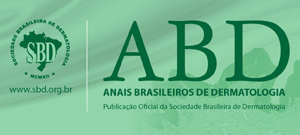BACKGROUND: Superficial and subcutaneous mycoses have a high prevalence and, often, chronic evolution. Therefore, they need extensive treatment with topic and/or systemic antifungal agents. Azoles and alilamines (terbinafine) are first-choice drugs to treat human and animal infections. Thus, evaluation of the efficacy of these drugs is important for a successful treatment. However, there are few studies that evaluate the in vitro activity of antifungal agents. OBJECTIVE: To evaluate the in vitro efficacy of terbinafine activity against filamentous fungi and yeasts that cause mycoses. METHOD: The in vitro activity of terbinafine (0.125-100µg) against 10 fungi species was evaluated by the diskdiffusion and microdilution/reference methods to determine the Minimum Inhibitory Concentration (MIC). RESULTS: We found a high susceptibility to terbinafine in: T. rubrum, M. gypseum, T. mentagrophytes, T. tonsurans, M. canis, C. carrionii and E. floccosum (halo ≥ 40mm with 0.125µg disk). S. hyalinum and C. parapsilosis were considered susceptible, but less than the others. Fusarium spp. showed the lowest susceptibility (halo=12mm with 2µg disk; MIC 8µg/mL). CONCLUSIONS: The results of this research confirm previous findings about the efficacy of terbinafine. The drug was shown to be highly effective to treat dermatophyte infections. The disk-diffusion method was easy to use and is a suitable technique for routine use in clinical laboratories.
Antifungal agents; Arthrodermataceae; Fungi; Mycosis






